7: Our Divisions
- Page ID
- 145369
At the end of the module, students will be able to:
- explain the implications of culture on social power and hierarchies
- summarize the mechanisms used by dominant groups to develop and sustain power
- understand cultural hegemony
- identify and evaluate prejudice and discrimination
- discuss types of racism and exploitation
KEY TERMS & CONCEPTS
|
Acculturation Affective Form Assimilation Authoritarian personality Cognitive Dissonance Cognitive Form Color Blindness Conative Dimension Critical Race Theory (CRT) Cultural Fit Cultural Hegemony Cultural Power Cultural Relativism Discrimination Ethnocentrism Eurocentrism Fallacies Ideological Racism |
In-group Individual Discrimination Institutional Discrimination Out-group Overcategorize Prejudice Racial Prejudice Racial Privilege Racism Reference Group Scientific Racism Social Location Socialization Socioeconomic Status Stereotypes Symbolic interactionism White Supremacy |
INTRODUCTION
By learning the history and the experiences of African Americans, Asian Americans, Latinx Americans, and Native Americans, we are better able to understand the racial formation, racial intolerance, racial and ethnic inequalities these major underrepresented groups have faced in the United States. The histories and lives of Americans of color show courageous character and acts of valor in their fight for freedom and equality as promised in the Constitution of the United States. Ancestors of these racial-ethnic groups represent agents of change and are our role models in the fight against prejudice, racism, and discrimination.
CULTURAL HIERARCHIES
All humans are comprised of the same biological structure and matter. The unique distinctions among us stem from our culture (Kottak & Kozaitis, 2012). The differences in our values, beliefs, norms, expressive language, practices, and artifacts are which stands us apart from one another. Being culturally unique projects exclusivity that draws attention to our variations and differences. People find cultural fit or acceptance from those who share uniqueness or the same cultural characteristics. Consequently, people may find or experience intolerance or rejection from those with different cultural traits.
Cultural distinctions make groups unique, but they also provide a social structure for creating and ranking people based on similarities or differences. A group’s size and strength influence their power over a region, area, or other groups. Cultural power lends itself to social, economic, and political power that influences people’s lives by controlling the prevailing norms or rules and making individuals adhere to the dominant group culture voluntarily or involuntarily.
Culture is not a direct reflection of the social world (Griswold, 2013). Humans frame culture to define meaning and interpret the social world around them. As a result, dominant groups are able to manipulate, reproduce, and influence culture among the masses or all Americans. Common culture found in society is actually the selective transmission of elite-dominated values (Parenti, 2006). This practice known as cultural hegemony suggests that culture is not autonomous, it is conditionally dictated, regulated, and controlled by dominant or powerful groups. The major forces shaping culture are in the power of elite-dominated interests who render limited and marginal adjustments to make culture appear changing in alignment with evolving social values (Parenti, 2006). The dominating cultural group often sets the standard for living and governs the distribution of resources.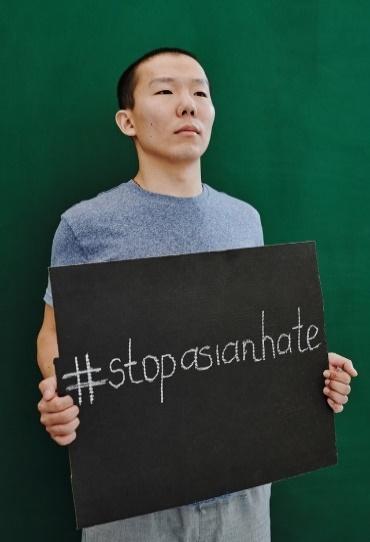
When social groups have or are in power, they have the ability to discriminate on a large scale. A dominant group or the ruling class impart their culture in society by passing laws and informally using culture to spread it. Access to these methods allows hegemonic groups to institutionalize discrimination. This results in unjust and unequal treatment of people by society and its institutions. Those who culturally align to the ruling class fair better than those who are different.
PREJUDICE
Cultural intolerance may arise when individuals or groups confront new or differing values, beliefs, norms, expressive symbols, practices, or artifacts. Think about a time when you came across someone who did not fit the cultural “norm” either expressively or behaviorally. How did the person’s presence make you feel? What type of thoughts ran through your head? Were you compelled to understand the differences between you and the other person or were you eager to dismiss, confront, or ignore the other person?
Living in a diverse society requires us to tackle our anxiety of the unknown or unfamiliar. The discomfort or cognitive dissonance we feel when we are around others who live and think differently than ourselves makes us alter our thoughts and behaviors towards acceptance or rejection of the “different” person in order to restore cognitive balance (Festinger, 1957). When people undergo culture shock or surprise from experiencing new culture or ideas, their minds undergo dissonance. Similar to a fight or flight response, we choose to learn and understand each other’s differences or mock and run away from them.
People judge and evaluate each other on a daily basis. Assessing other people and our surroundings is necessary for interpreting and interacting in the social world. Problems arise when we judge others using our own cultural standards. As discussed in Module 1, we call the practice of judging others through our own cultural lens ethnocentrism. This practice is culturally universal. People everywhere think their culture or way of life is true, moral, proper, and right (Kottak & Kozaitis, 2012). By its very definition, ethnocentrism creates division and conflict between social groups whereby mediating differences is challenging when everyone believes they are culturally superior, and their values, beliefs, norms, expressive language, practices, and artifacts should be the standard for living.
BIOGRAPHICAL REFLECTION 7.1
NEW HOME & RACE RELATIONS
My family fled communist Laos to find safety and freedom with a kernel of hope that our life in a different country would be easier. After four years of living in a dilapidated Thailand refugee camp, fenced by barbed wire, my family resettled in the United States in 1979. Of all places, we ended up in Nashville, home to America’s country music. How heartland could one get! I get to tell friends and colleagues that my first three words of English were: Yes, No, and Hee-Haw.
All kidding aside, there were serious racial tensions between the Hmong and our Black neighbors. They had no idea who we were and vice versa. Granted, most of our Black neighbors were indifferent towards us; some were friendly and greeted us with a good morning wave; a few, however, found new opportunities to perpetrate their violence. Three Hmong families – my father’s, my cousin’s, and our brother-in-law’s – with 19 children were housed in a 4-bedroom and 1 restroom apartment. We were refugees; tight space was not a problem. Soon enough, though, we discovered we may have escaped the terror of communists, but then only to enmesh in a new terror on Wharf Avenue in Nashville’s impoverished project, a quicksand that swallowed Hmong refugees into culture shock and further made us easy crime targets.
While biking around the block, my younger brother, Pao, 9 years-old, was chased and shot on the forehead by a BB gun, nearly blinding him. The two juvenile Black boys who shot him were never brought to justice. My aunt Blong had her stack of food stamps stolen from her pocket as she was shoved to the sidewalk. Early one morning my uncle Nhia Va got robbed and stabbed in the stomach while walking to his car to go to work. He managed to run two blocks to find help at our apartment while trying to keep his intestines from slipping out more. I was ten years old; the gruesome image haunted me for years. The police had to be called more times than I can remember. My older brother, Shua, was the only person who spoke English and made all the calls to the police. One day we heard a loud bang on our door. We opened the door and found eight angry black men standing outside, yelling and demanding Shua to go outside. Who knew what would have transpired next had we not had a security door. Quickly, my brother called the police again. The men dispersed when the police came a minute later.
These incidents in turn twisted us, and we learned to hate back, wondering why Black people were so mean. We spoke ill of them and wished they didn’t exist. The racial tensions were beyond remedy. The only remedy was to move away, but we could not. We had no money, no way to search for a new place. Where it would be safe, we could not afford; where we could afford with the little government cash aid we received, there was no vacancy.
Our three congested Hmong families lived in fear and constant harassment for another eight months before our sponsor found two open apartments on 40th Avenue and a house in a quiet White neighborhood, making our relocation possible. The project on 40th Avenue felt different, though our new neighbors were also predominantly Black. We felt safe sitting outside our front door to relax. The Black kids in the neighborhood were friendly and invited my two brothers and me to play basketball and football. Sports pulled us together and made us friends. In basketball these Black friends taught us names like Larry Bird, Magic Johnson, Kareem Abdul Jabbar, and football Earl Campbell, Steve Bartkowski, Ed “Too Tall” Jones, and Joe Montana. When our family moved to Fresno a year and half later to join the growing Hmong community in Fresno, my brothers and I truly missed those three Black friends. At times we reminisced about our childhood playdays with Joe Bert, KK, and Lil. Through those friends, we learned to judge people by character, not by skin color – reversing our Wharf Avenue nightmare.
Church service was a thing our family, along with other Hmong and White American families, did on Sunday mornings. White people from the Church of Christ picked us up for service; they dropped us off. But they didn’t live near us. Occasionally they invited us to their homes across town. We saw how nice, clean, and spacious their homes were; no broken glass bottles on the street, grass cut, and trees trimmed – a drastic change from what I’ve seen at our apartment in the project. It was my first glimpse into the economic divide of a deep sociological (perhaps racial) issue beyond my comprehension.
My first introduction to college was when a church friend, Allen Burris, took us to get some tutorials from his college friends at David Lipscomb College. On a side conversation, I asked a naïve question to which I learned something new quickly, “Allen, what’s the name of the principal in your college?” “My principal is Mr. Snow,” I revealed proudly like I got points for knowing it. Allen responded, “In college we don’t have a principal, but we have a president.” I remember asking Allen further (with my broken and hesitant English) why Jimmy Carter is the president, but we have a person in the school called president, too? The conversation morphed into some additional explanation that Jimmy Carter is the president for the whole United States, but the school president is only in charge of the college. I knew then I wanted to go to college, not to become a college president but just to know things.
Fresno’s growing Hmong population provided my parents a sense of belonging - seeing relatives, speaking the same language, and living near each other in apartment clusters in SE Fresno. They felt they could be Hmong again after two years of cultural and linguistic isolation in Nashville. Other Hmong people organized cultural festivals to restage an old practice in a new country, for example, the Hmong New Year celebration became the premier event to attend. This multifaceted social event attracted friends and relatives from all over the country to meet in Fresno. Young single people had the opportunity to find a spouse, fulfilling booth vendors and organizers’ dreams of cash operating schemes. My sisters who were barely in their mid-teens were pressured to get married. Some conversations among the elderly women – my mother included - were about how to marry off their daughters before they became “old maids.” Occasionally the conversation drifted off to complain about the inconsistent welfare amount they received from social services. Both issues horrified and embarrassed me profoundly. I only wish my sisters were directed towards going to college instead of early marriage; I wish my parents had education and held jobs, so we didn’t have to rely on welfare. I vowed never to succumb to the social backwardness of my culture because being Hmong meant uneducated and dependent on welfare.
This story “New Home & Race Relations” by Silas Cha is licensed under CC BY NC ND 4.0
The U.S. cultural lens is a product of the country’s founding fathers and early settlers. European culture and history became the widely accepted view during the colonialization of what we call “America.” Eurocentrism is a worldview centered on Western civilization derived from the culture and history of Western Europe and the early colonizers. As the country was conquered and a government established, native peoples and immigrants (voluntary and involuntary) were pressured to assimilate and acculturate to European way of life. Through assimilation, minority groups were forced to assume and absorb the majority (dominant group) culture. Acculturation occurred as minority groups adapted to the dominant culture while maintaining some cultural uniqueness such as language, traditions, and dietary customs. Eurocentric ideals continue to be instilled in America today through socialization of children and youth, and the assimilation and acculturation of new immigrants.
Eurocentric ideals promote racial-ethnic group dominance of Whites. White supremacy is the belief that White people are a superior race and must dominate society to the exclusion or detriment of other racial-ethnic groups. As we have learned, the concept of race is socially constructed. Scientists working on the human genome project showed there is no “race” gene (Anderson & Collins, 2010). The meaning of race stems from social, historical, and political contexts which nonetheless makes race meaningful and real in our experiences. Racial framing and classification reflect prevailing or dominant group views and reinforces the ideological belief that racial categories and grouping is natural or the norm though scientific evidence suggests the contrary. Racial categories are the basis for allocating resources and framing political issues and conflicts (Anderson & Collins, 2010). For example, the Holocaust was a result of the social construction of “Jew” as a race in Nazi Germany. Still today White supremacist groups and White racism typify the “Jewish” racial category even for people who are seen and live in our society as “White” (Ferber, 1999).
In contrast to ethnocentric and Eurocentric beliefs and ideas, cultural relativism insinuates judging a culture by the standards of another is objectionable, unpleasant, and offensive. It seems reasonable to evaluate a person’s values, beliefs, and practices from their own cultural standards rather than be judged against the criteria of another (Kottak & Kozaitis, 2012). Learning to receive cultural differences from a place of empathy and understanding serves as a foundation for living together despite variances. Like many aspects of human civilization, culture is not absolute but relative suggesting values, beliefs, and practices are only standards of living as long as people accept and live by them (Boas, 1887). Developing knowledge about cultures and cultural groups different from our own allows us to view and evaluate others from their cultural lens and life experience.
Sometimes people act on ethnocentric thinking and feel justified disregarding cultural relativism. Overcoming negative attitudes about people who are culturally different from us is challenging when we believe our culture and thinking are justified. Consider the social issue of infanticide or the killing of unwanted children after birth. The historical practice in some societies occurred in times of famine or hardship when resources were scarce to keep non-productive humans alive. Many people find infanticide a human rights violation regardless of a person’s cultural traditions and beliefs and think the practice should stop. People often feel justified condemning the practice of infanticide and the people who believe and practice the tradition.
Prejudice is an attitude of thoughts and feelings directed at someone from prejudging or making negative assumptions. Negative attitudes about another’s culture are a form of prejudice or bias. Prejudice is a learned behavior. Prejudicial attitudes can lead to discriminatory acts and behaviors. Prejudicial attitudes and beliefs stem from overcategorizing, stereotypes, and fallacies about people. We are prejudice when we overcategorize people by exaggerating a group’s belief system, associating the belief with a certain type of people, and defining the belief and type of people in a positive or negative way to justify a favorable or unfavorable prejudice (Farley, 2010). Stereotypes are oversimplified ideas about groups of people we believe to be true (Griffiths et al., 2015). By stereotyping people, we infer all members of a group have the same characteristics or abilities. Fallacies are errors in our reasoning that undermine logical thinking. Fallacies are classified as illegitimate arguments (inconsistent or inappropriate), irrelevant facts, or unsubstantiated information (Lau & Chan, 2021). 
Prejudice occurs in the mind as we process information about people. Our attitudes and beliefs of others reflect what we think about their characteristics or abilities. There are three ideological dimensions of prejudicial thinking: cognitive, affective, and conative (Farley, 2010). A cognitive form of prejudice depicts the beliefs we think are true about others. Affective forms of prejudice indicate our likes and dislikes of others. Lastly, the conative dimension signifies the behavior we are likely to display towards others as a result of our prejudice. For example, thinking the practice of infanticide should stop (cognitive) and those who practice it malevolent (affective) is prejudicial. Trying to stop the practice (conative) with force is discriminatory. There are times in the case of human rights issues like this where the fine line between criticizing with action (ethnocentrism) and understanding with empathy (cultural relativism) are clear. However, knowing the appropriate context when to judge or be open-minded is not always evident. Do we allow men to treat women as subordinates if their religion or faith justifies it? Do we allow people to sacrifice puppies for religious or spiritual purposes? Do we stop children who do not receive vaccinations from attending school? All of these issues stem from cultural differences and distinguishing the appropriate response is not always easy to identify.
Because prejudice is associated with the mind and one’s thinking, it is important to understand its causes. Social scientists have found three general theories on why people are prejudice. The first perspective explains that some people have an authoritarian personality that is prone to prejudice in order to fulfill their own personality needs (Adorno et al., 1950; Freud 1930, 1962). This theory suggests prejudice is produced by a particular personality pattern or type. The term “authoritarian” was given to this theory to illuminate that people with this personality pattern or type are likely to support authoritarian political movements promoting and supporting prejudice such as White supremacy. According to Brown (1965) the basic characteristics associated with an authoritarian personality are: 1) adherence to conventional values, 2) uncritical acceptance of authority, 3) aggressive towards others who do not conform to authority or the norms, 4) oppose and reject self-analysis, 5) superstitious and stereotypical in thinking, 6) concerned with power and being tough, 7) display destructive and cynical ideas, 8) view the world as wild and dangerous, and 9) overly concerned with sex crimes and people living wild sex lives. An authoritarian personality results in scapegoating or displacing aggression and projecting emotions or traits a person does not like about one’s self and attributing them to others. Examples include blaming others for personal failures or a violent person suspecting others as being harmful.
Several theorists have discovered specific personality patterns and traits associated with prejudice. Ehrlich (1973) found insecure and people lacking self-esteem are often prejudiced. They are unable to accept negative aspects of their personalities (Farley, 2010). Adorno, Frenkel-Brunswick, Levinson, and Sanford (1950) showed prejudiced subjects were highly concerned about their social status and came from strict homes. Hamilton (1981) uncovered the need to see the world in oversimplified terms was linked to prejudice. Whereby, Fishbein (1996) showed the need to deny one’s own shortcomings was linked to prejudicial thinking. Furthermore, Duckitt (2001) linked the need to obey and respect authority reflected the need for personal control and security. Lastly, Altemeyer (1998) coined the term “social dominance orientation” to describe the belief in the importance of social hierarchy or belief that some people are better than others. The result of this research on personality and prejudice shows that when people feel there is a threat to their social stability or cohesion, the effects of authoritarianism on personal and social prejudice are greater (Feldman, 2003).
The second perspective suggests people learn or are socialized to be prejudiced. Socialization occurs throughout the course of life. Learning the cultural traits and characteristics at certain stages of life is important in developing self-identity and group acceptance. Parents and peers with whom a child feels close identification are especially strong influencers (Kasser et al., 2002; Bandura & Walters, 1963; Allport, 1954). People learn prejudice through socialization reinforcing implicit bias and racist ideologies such as “White is normal.” 
Social learning theory (Bandura, 1977) is a form of symbolic interactionism examining micro-level interactions of thinking and behavior. Interactionists consider how people interpret meaning and symbols to understand and navigate the social world. Individuals create social reality through verbal and non-verbal interactions. These interactions form thoughts and behaviors in response to others influencing motivation and decision-making. Hearing or reading a word in a language one understands develops a mental image and comprehension about information shared or communicated such as the media message of “the crack mother icon” which is most commonly visualized as a single mother of color on drugs with multiple children receiving welfare or government assistance.
BIOGRAPHICAL REFLECTION 7.2
THAT IS NOT AN ALTERCATION
Winston is a delightful soul. He is one of my three sons and his smile tells it all. He lives life out loud, is solid in who he is, and has a bright future. He was about 5’11 in junior high, which makes him look older, and is an exceptional athlete. He looks predominately African American although he comes from a multi-racial background as you can see in this photo from his 8th grade graduation. 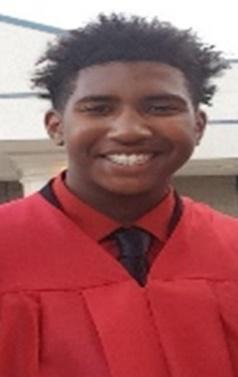
When he was in junior high school, I received a call from the Dean at the school he attended. The Dean announced who he was and stated, “Winston has been in an altercation, you need to come to the school.” My first thoughts are, “Winston in a fight? He has never been in a fight. He is a highly competitive athlete who I have seen shoved on a court by an opponent, and he shrugs it off and keeps moving. Fighting is not him. Either way, I raced to the school.
When I arrive, my Winston is in the office and visibly annoyed that I have shown up. He is shaking his head and tells me this is being blown out of proportion. The Dean tells me that he has video footage of the altercation, but first he wants Winston to tell me what happened. He tells Winston with an emphatic tone, “Tell your mother what happened.” Winston says, “We were play fighting on the bus.” The Dean states again in an emphatic tone, “Winston, I have video footage of what happened, tell your mother the truth.” Winston insists, “We were playing on the bus mom.” At this point I am annoyed because I raced over from work, now I simply want to see this video.
The video rolls and I see a bus full of rambunctious middle schoolers. The bus driver is visibly agitated at all of the energy behind him. Finally, the scene of the “altercation.” Winston is sitting across from one of his friends on the bus, an Asian Indian friend. His friend has a ball in his hand and Winston placed his hand underneath his friend’s hand and slaps up causing the ball to drop on the floor. His friend stands up and punches Winston in the arm a few times, and Winston starts laughing with him about the matter with his body in a defensive mode saying, “Ok, Ok, I’m sorry dude.” End of altercation.
In the most diplomatic way possible, I shared with this Dean how I felt that the language he used to describe what happened was overzealous at best. I asked him "Where is Winston's friend who punched him?" He stated that he was in the lobby of the administration building. I asked, “Are they ok with each other?” The Dean said, “Yes.” I said, okay, I need to get back to work.
I wondered if the Dean, being a White man, working at a mainly White school, made his perspective “whitewashed” to the ways boys’ banter. I was most concerned because the language he used could have caused Winston to be suspended from school. He insisted that Winston be sent home for the day as a result. I advocated for him to stay in school as he did nothing wrong from what I observed. As a matter of fact, he was punched several times. I also stated that the lack of mediation for these types of interactions at school is a problem and as administrators, there is an expectation that they would try to mitigate situations like this.
I would have many more stories like this where people would see him as a “Big Black Boy,” and use loaded words to describe him or a situation involving him. The implicit bias of his size and color would be quelled once people got to know him and realize what a sweet and respectful young man he is. It was and still is heart wrenching as a mother to remind him to not forget where he is and who he is around.
I wondered what would have happened to Winston along the way if he did not have a parent that was advocating for him and teaching him how to navigate through a world as a “Big Black Boy.” I would often pray that instead of seeing altercations, or threats, they would see what I see. I see a young man who embraces the person he was created to be.
This story “That Is Not an Altercation” by Guadalupe Capozzi is licensed under CC BY NC ND 4.0
Implicit bias or unconscious prejudice reinforced through socialization (e.g., societal messages) frames positive words and images for in-group members who share interests and identity and negative ones for out-groups. An in-group is a group toward which one feels particular loyalty and respect. The traits of in-groups are virtues, whereas traits of out-groups are vices (Henslin, 2011). An out-group is a group toward which one feels antagonism and contempt. Consider members of a team or club, people on the same team will develop an in-group admiration and acceptance while viewing members of the opposing team or club as members of their out-group.
Socialization protects and shelters in-group members with ideologies that instill unconscious prejudice and animosity toward or competition with out-groups. As in-group members are socialized they receive selective exposure and modeling to reinforce group homogenity (similarity) and cohesiveness (belonging). Agents of socialization including family and peers reward behavior and attitudes that conform to group norms and punish those that do not (Farley, 2010). Children growing up in prejudicial environments are likely to express prejudice towards out-groups and internalize prejudicial beliefs and attitudes which lays the foundation for similar ideas and thinking in adulthood.
Asch (1956) discovered people conform to gain acceptance and learn the rules or norms by watching and mimicking reference group members. Reference groups are also influential groups in someone’s life. A reference group provides a standard for judging one’s own attitudes or behaviors within a social setting or context (Henslin, 2011). People use reference groups as a method for self-evaluation and social location or status. People commonly use reference groups by watching and emulating the interactions and practices of others so, they fit in and garner acceptance by their associated in-group. Bonilla-Silva & Embrick (2007) learned that studying neighborhoods where people grow up around White-centered life socializes them to a life centered on Whites. 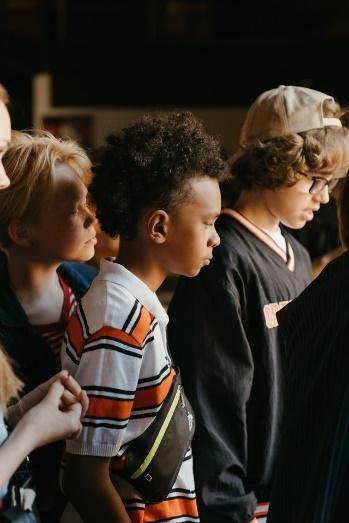
The third perspective suggests a correlation between socioeconomic status and prejudice. Socioeconomic status (SES) is an individual’s social position or class (Conerly, Holmes, and Tamang, 2021). Marx & Engels (1967) suggested there is a social class division between the capitalists who control the means of production and the workers. In 1985, Erik Wright interjected that people could occupy contradictory class positions throughout their lifetime. People who have occupied various class positions (e.g., bookkeeper to manager to chief operating officer) relate to the experiences of others in those positions, and as a result, may feel internal conflict in handling situations between positions or favoring one over another. Late in the twentieth century, Dennis Gilbert & Joseph Kahl (1992) updated the three-component theoretical perspective (class, status, and power) of Max Weber (1922, 1978) by developing a six-tier model portraying the United States class structure including underclass, working-poor, working, lower middle, upper middle, and capitalists. The social class model depicts the distribution of property, prestige, and power among society based on income and education.
Each class lifestyle requires a certain level of wealth in order to acquire the material necessities and comforts of life (Henslin, 2011). The correlation between the standard of living and quality of life or life chances (i.e., opportunities and barriers) influences one’s ability to afford food, shelter, clothing, healthcare, other basic needs, and luxury items. A person’s standards of living including income, employment, class, and housing effects their cultural identity.
Social class serves as a marker or indication of resources. These markers are noticeable in the behaviors, customs, and norms of each stratified group (Carl, 2013). People living in impoverished communities have different cultural norms and practices compared to those with middle incomes or families of wealth. For example, the urban poor often sleep on cardboard boxes on the ground or on sidewalks and feed themselves by begging, scavenging, and raiding garbage (Kottak & Kozaitis, 2012). Middle income and wealth families tend to sleep in housing structures and nourish themselves with food from supermarkets or restaurants.
Language and fashion also vary among these classes because of educational attainment, employment, and income. People will use language like “White trash” or “welfare mom” to marginalize people in the lower class and use distinguished labels to identify the upper class such as “noble” and “elite.” Sometimes people often engage in conspicuous consumption or purchase and use certain products (e.g., buy a luxury car or jewelry) to make a social statement about their status (Henslin, 2011). Nonetheless, the experience of poor people is very different in comparison to others in the upper and middle classes and the lives of people within each social class may vary based on intersectionality or their position within other social categories including age, (dis)ability, gender, race, region, and religion.
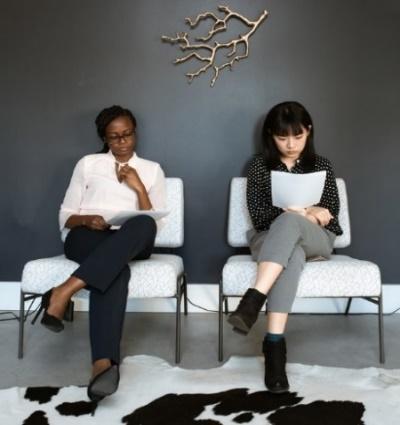
Socioeconomic status influences the social position and life experiences of people. The social structure plays an integral role in the social location (i.e., place or position) people occupy in society. Your social location is a result of cultural values and norms from the time period and place in which you live. Culture affects personal and social development, including the way people will think or behave, including ideas and feelings of prejudice.
Social location influences how people perceive and understand the world in which we live. People have a difficult time being objective in all contexts because of their social location within cultural controls and standards derived from values and norms. Objective conditions exist without bias because they are measurable and quantifiable (Carl, 2013). Subjective concerns rely on judgments rather than external facts. Personal feelings and opinions from a person’s social location drive subjective perspectives and concerns about others and the world.
Socioeconomic status and other characteristics pertaining to race, age, gender, and education also influence the location people occupy at any given time. Specifically, Farley (2010) found education reduces prejudice. Sniderman & Piazza (1993) concluded educated people were more comfortable with abstract ideas and engaged in complex thinking or thoughtful reflection. Other researchers showed prejudice is reinforced by teaching ideologies of dominant groups both formally in the classroom and informally through other agents of socialization such as family and peers (Jackman and Muha, 1984; Schaefer, 1996). Bonilla-Silva & Forman (2000) discovered educated people hide their prejudices to avoid being perceived as bad and project an image of being color-blind. Reaffirming research by Picca & Feagin (2007) showed educated Whites only express racist views in Whites-only settings.
The reality of an insecure social position feeds prejudicial thinking and behavior. Working class prejudice arises from whites competing with people of color (Ransford, 1972). Competition creates a social environment of threats and enemies between racial-ethnic groups. The Klu Klux Klan (KKK) draws its most support from working-class and poor Whites (Farely, 2010). As the United States diversifies and the minority population increases, people of color further become a perceived threat to White’s socioeconomic opportunities and power (King & Weiner ,2007; Pederson, 1996; Quillian, 1996).
RACISM & EXPLOITATION
Race reflects a social stigma or marker of superiority (Kottak & Kozaitis, 2012). Racism is an attitude, ideology, behavior, or social arrangement (e.g., institution) that benefits and supports a particular race or ethnic group (i.e., dominant or powerful) over another (minority). Racism is projected by people in different forms such as racial prejudice, ideological racism, scientific racism, individual discrimination, and institutional discrimination.
Racial prejudice is the fundamental attitude that favors one racial-ethnic group over another, lending it to cause unequal treatment on the basis of race (Farley, 2010). Prejudicial attitudes derive from people’s thinking and can be overt or subtle. Overt prejudice manifests into direct dislike or disdain of a particular racial-ethnic group or its members with the belief that they are inferior. Subtle prejudice occurs through the recognition that a particular racial-ethnic group causes their own problems or is the root of social problems.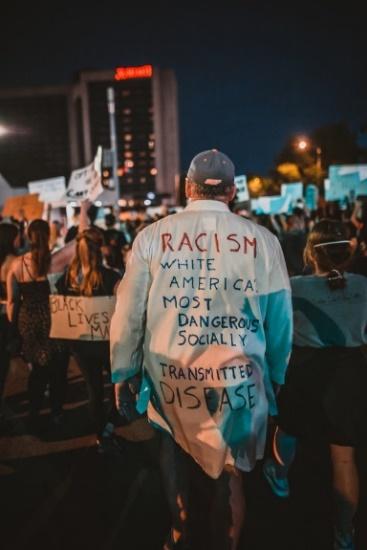
Ideological racism is the belief that some people are biologically, intellectually, and culturally inferior to others (Farley, 2010). This ideology views racial-ethnic groups as superior or inferior to one another. Racist ideology has been substantiated by early publications of scientific theory forming racist bias in research called scientific racism. Consider, social Darwinism which argued “survival of the fittest” creating the socially accepted belief that people with wealth and power are the “most fit.” This ideology was adopted in colonial America to warrant the domination and support the colonization of the native peoples of Africa, the Americas, and Asia by White Europeans (Farley, 2010). The use of scientific theory to justify a racial superiority and inferiority rationalized for many the idea of a “natural law” advertently served dominant group interests. However, thorough scientific analysis does not substantiate or validate the biological, intellectual, cultural superiority of any racial-ethnic group (UNESCO, 2021: Montagu, 1964). True science has discredited the existence of racial superiority, defines race as a social construct and confirms that race is not sound on a biological basis. Therefore, ideological and scientific racism are accepted by those who want to rationalize their domination of other groups or legitimize their superiority.
Discrimination is an action of unfair treatment against someone based on characteristics such as age, gender, race, religion, etc. When discrimination centers on race, it is racism. There are two types of racial discrimination: individual and institutional. Individual discrimination is “unfair treatment directed against someone” (Henslin, 2011, p. 218). Whereas institutional discrimination is negative systemic treatment of individuals by society through education, government, economy, health care, etc. According to Perry (2000), when people focus on racial-ethnic differences, they engage in the process of identity formation through structural and institutional norms. As a result, racial-ethnic identity conforms to normative perceptions people have of race and ethnicity reinforcing the structural order without challenging the socio-cultural arrangement of society. Maintaining racial-ethnic norms reinforces differences, creates tension, and disputes between racial-ethnic groups sustaining the status quo and reasserting the dominant groups position and hierarchy in society.
Upon the establishment of the United States, White legislators and leaders limited the roles of racial-ethnic minorities and made them subordinate to those of White Europeans (Konradi & Schmidt 2004). This structure systematically created governmental and social disadvantages for minority groups and people of color. It has taken over 200 years to ensure civil rights and equal treatment of all people in the United States; however, discriminatory practices continue because of policies, precedents, and practices historically embedded in U.S. institutions and individuals behaving from ideas of racial stereotypes. Think about the differences people have in employment qualifications, compensation, obtaining home loans, getting into college, toxic waste dumping. What racial and ethnic stereotypes persist about different racial and ethnic groups in these areas of life?
Whites in the United States rarely experience racial discrimination making them unaware of the importance of race in their own and others’ thinking as compared to Americans of color or ethnic minorities (Konradi & Schmidt, 2004). Some Whites argue racial discrimination is outdated and feel uncomfortable with the blame, guilt, and accountability of individual acts and institutional discrimination. These ideas and feelings have prompted many White Americans to protest Critical Race Theory in schools.
Critical Race Theory (CRT) is a socio-intellectual movement of civil rights scholars and activists who challenge approaches to racial justice in U.S. laws. A key concept of CRT is intersectionality and how forms of inequality and identity are affected by race, class, gender, and disability. CRT emphasizes critical thinking about race, views race as a social construct, uses storytelling to explore lived experiences, and argues the idea of race advances the interests of Whites at the expense of people of color. CRT challenges the idea that U.S. law is neutral and color-blind. The movement began in the 1960s, but in 2020 became the focus of U.S. conservative lawmakers to ban and restrict the instruction of CRT and anti-racism education in primary and secondary schools in response to White grievance, guilt, and shame. Those opposed to CRT have misrepresented its principles and significance. CRT has not been part of the U.S. primary and secondary school curriculum. Its study and writings have historically been examined in higher education. Banning or restricting the work of CRT silences discussions about the history of race, racism, equality, and social justice.
By redirecting attention or ignoring race, White people believe they are practicing racial equality by being color blind, and it will eliminate racist atmospheres (Konradi & Schmidt, 2004). They do not realize the experience of not “seeing” race itself is racial privilege. Research shows the distribution of resources and opportunities are not equal among racial and ethnic categories, and White groups do better than other groups and Blacks are predominantly among the underclass (Konradi & Schmidt, 2004). Regardless of social perception, in reality, there are institutional and cultural differences in government, education, criminal justice, and media and racial-ethnic minorities received subordinate roles and treatment in society.
SUMMARY
In Module 7, we examined socio-cultural hierarchies and power in the United States. We learned the dominating cultural group sets the standard for living and governs resources. Next, we explored the causes and types of prejudice. You were asked to recognize and think about your implicit bias. We also discovered the origins and promotion of Eurocentric thinking and behavior as a mechanism to promote racial-ethnic group dominance of Whites. And lastly, we considered how racism is projected by people in different forms including racial prejudice, ideological racism, scientific racism, individual discrimination, and institutional discrimination.
REVIEW QUESTIONS
- Discuss how culture influences social power and hierarchies in the United States.
- Explain how cultural hegemony affects race and ethnic relations.
- Analyze the causes and types of prejudice in society. Include your understanding or interpretation about why prejudice exists.
- Assess the possible motivations behind racist ideologies.
- Examine how racist ideas make it possible to maintain racist policies.
TO MY FUTURE SELF
From the module, what information and new knowledge did I find interesting or useful? How do I plan to use this information and new knowledge in my personal and professional development and improvement?
REFERENCES
Adorno, T. W., Frenkel-Brunswick, E., Levinson, D. J., & Sanford, R. N. (1950). The authoritarian personality. Harper & Row.
Allport, G. W. (1954). The nature of prejudice. Addison-Wesley.
Altemeyer, B. (1998). The other authoritarian personality. Advances in Experimental Social Psychology, 30, 47-92.
Anderson, M. L. & Collins, P. H. (2010). Race, class, & gender: An anthology. (7th ed.). Wadsworth.
Asch, S. E. (1956). Studies of independence and conformity: a minority of one against a unanimous majority. Psychological Monographs, 70(416), 1-12.
Bandura, A. (1977). Self-efficacy: Toward a unifying theory of behavioral change. Psychological Review, 84(2), 191–215.
Bandura, A. & Walters, R. H. (1963). Social learning and personality development. Holt, Rinehart & Winston.
Boas, F. (1887). Museums of ethnology and their classification. Science, 9, 589.
Bonilla-Silva, E. & Embrick, D. G. (2007). Every place has a ghetto: The significance of Whites’ social and residential segregation. Symbolic Interaction, 30, 323-345.
Bonilla-Silva, E. & Forman, T. A. (2000). “I’m not a racist, but: Mapping White college students’ racial ideology in the U.S.A.” Discourse and Society, 11, 51-86.
Brown, R. (1965). Social Psychology. Free Press.
Carl, J. D. (2013). Think social problems. (2nd ed.). Pearson Education, Inc.
Conerly, T. R., Holmes, K., & Tamang, A. L. (2021). Introduction to sociology 3e. OpenStax.
Duckitt, J. (2001). A dual process cognitive-motivational theory of ideology and prejudice. Advances in Experimental Social Psychology, 33, 41-113.
Ehrlich, H. J. (1973). The social psychology of prejudice. Wiley Interscience.
Fadiman, A. (1997). The spirit catches you and you fall down : a Hmong child, her American doctors, and the collision of two cultures (1st ed.). Farrar, Straus, and Giroux.
Farley, J. E. (2010). Majority-minority relations. (6th ed.). Prentice Hall.
Feldman, S. (2003). Enforcing social conformity: A theory of authoritarianism. Political Psychology, 24, 41-74.
Ferber, A. L. (1999). What White supremacists taught a Jewish scholar about identity. The Chronicle of Higher Education, B6-B7.
Festinger, L. (1957). A theory of cognitive dissonance. Stanford University Press.
Fishbein, H. D. (1996). Peer prejudice and discrimination: Evolutionary, cultural, and developmental dynamics. Westview Press.
Gilbert, D. & Kahal, J. A. (1992). American class structure. (4th ed.). Wadsworth Company.
Griffiths, H., Keirns, N., Strayer, E., Cody-Rydzewsk, S., Scaramuzzo, G., Sadler, T., Vyain, S., Byer, J., and Jones, F. (2015). Introduction to sociology 2e. OpenStax College.
Griswold, W. (2013). Cultures and societies in a changing world. (4th ed.). Sage Publications, Inc.
Hamilton, D. L. (1981). Cognitive processes in stereotyping and intergroup behavior Hillsdale. Erlbaum.
Hamilton-Merritt, J. (1993). Tragic mountains: the Hmong, the Americans, and the secret wars for Laos, 1942-1992. Indiana University Press.
Henslin, J. M. (2011). Essentials of sociology: A down-to-earth approach. (11th ed.). Pearson.
Jackman, M. R. & Muha, M. J. (1984). Education and intergroup attitudes: Moral enlightenment, superficial democratic commitment, or ideological refinement? American Sociological Review, 49, 751-769.
Kasser, T., Koestner, R., & Natasha L. (2002). Early family experiences and adult values: A 26-year prospective longitudinal study. Personality and Social Psychology Bulletin, 28, 826-835.
Kennedy, V. (2018). Beyond race: Cultural influences on human social life. West Hills College Lemoore.
Kennedy, V., Norwood R., & Jendian, M. (2017). Critical thinking about social problems. Kendall Hunt Publishing Company.
King, R. D. & Weiner, M. F. (2007). Group position, collective threat, and american anti-semitism. Social Problems, 54,47-77.
Konradi, A. & Schmidt, M. (2004). Reading between the lines: Toward an understanding of current social problems. (3rd ed.). McGraw-Hill.
Kottak, C. P. & Kozaitis, K. A. (2012). On being different: Diversity and multiculturalism in the north American mainstream. (4th ed.). McGraw-Hill Companies, Inc.
Lau, J. & Chan, J. (2021). Critical Thinking Web. University of Hong Kong. https://philosophy.hku.hk/think/fallacy/fallacy.php
Marx, K. & Engels, F. (1967). Communist manifesto. Pantheon.
Montagu, M. F. A. (1964). Man’s most dangerous myth: The fallacy of race. (4th ed.). World.
Parenti, M. (2006). The culture struggle. Seven Stories Press.
Pederson, W. (1996). Working class boys at the margin: ethnic prejudice, cultural capital, and gender. Acta Sociologica, 39,257-79.
Perry, B. (2000). Beyond Black and White. Sociology of Crime, Law and Deviance, 2, 301-323.
Picca, L. H. & Feagin, J. R. (2000). Two-faced racism: Whites in the backstage and frontstage. Routledge.
Quillian, L. (1996). Group threat and regional change in attitudes toward African Americans. American Journal of Sociology, 102, 816-860.
Ransford, H. E. (1972). Blue-collar anger: Reactions to student and Black protest. American Sociological Review, 37, 333-346.
Schaefer, R. T. (1996). Education and prejudice: Unraveling the relationship. Sociological Quarterly, 37, 1-16.
60 Minutes. (2015 August 13). Hmong Our Secret Army. [YouTube]. https://www.youtube.com/watch?v=L4U2P7tsOAQ
Sniderman, P. M. & Piazza, T. (1993). The scar of race. Belknap Press and Harvard University Press.
UNESCO. (2021). Anti-Racism: UNESCO’s Early Mental Engineering. The UNESCO Courier. https://en.unesco.org/courier/lrsl-lrqmy/anti-racism-unescos-early-mental-engineering
Weber, M. (1922, 1978). Economy and society. University of California Press.
Wright, E. O. (1985). Class. Verso.


